Summer in Chicago is a time to celebrate warm weather with numerous outdoor activities filled with festivals and concerts to help us forget the long winters. But, in our house, summer means its Triathlon season for our son, Drew. Drew has been doing triathlons since he was 13, when he fell in love with the sport at his first kid’s triathlon at the Leaning Tower Y in Niles,IL, and he won. After a couple of years, he began placing in his age group at almost every local race he has competed in. Now at the age of 18, Drew has moved into the world of junior elite racing, where drafting on the bike is legal (drafting allows bikers to ride very close together in order to use the lead bikers speed to move you along). The race is limited to 65-75 very fast and nationally ranked boys in his age group of 16-19 years old.
Drew competed in 2 junior elite races this summer, in Pleasant Prairie, Wi and in Des Moines, IA, where he moved up from 60th place coming out of the swim to 35th overall in a blistering hot and fast race. Obviously, the swim is his slowest event of the race. His most recent local race was at The Glenview Park Center, where he placed 3rd overall out of 400 and 1st in his age group.
The triathlon consists of 3 sports, always done in the same order, swim, bike, run. Often when people hear the word triathlon they think of an Ironman, the longest of all the triathlon distances. But, there are actually 4 distances, sprint, Olympic, half ironman, and ironman. Drew’s races have all been sprint distances except for 1 Olympic distance. The sprint distance can vary, but typically are as follows: the swim is 300-750 meters in a pool or body of water, the bike is 10-15 miles long, and the run is always a 5k. Between each event the athlete moves through a transition area, where they have set up their gear for biking and running, in order to begin the bike or the run portion of the race.
The night before the race, Drew lays out everything he needs for the race on his bed and meticulously packs it all in a backpack. He is extremely organized, detail oriented and prepared for any possibility that might arise on race day, such as weather changes and equipment and nutritional needs such as extra swim caps and goggles, food, gummies, and water bottles. He has a routine workout he always does the day before the race, focusing on transition from bike to run.
We often have to wake up before 4:00 am in order to get to the race so Drew can set up his transition area. I pack a “sack of PB&J sandwiches” for us to eat through the morning of the race and make Drew a scrambled egg, and then go off on our way before the sun has risen. I always thank him for choosing triathlons instead of baseball (no offense to dedicated baseball parents) as I would gladly wake up at an ungodly hour 4-5x a summer for his triathlons instead of going to numerous baseball games. Drew tackles triathlons the same way he tackles life, with great joy, self awareness, both mental and physical, the desire and motivation to always do his best, and attention to detail.
In the early morning light, Drew sets up his transition area with his Cervelo bike, bike and run gear in an organized, purposeful fashion so during the race he can move through transition as quickly as possible. In a highly competitive race, time spent or lost in transition can make the difference between a successful race or not.
Drew flying onto the bike at Glenview triathlon.
Athletes enter the water in waves usually by estimated swim time or by age group. When Drew finishes the swim, he runs from the swim into the transition area, puts his sunglasses and helmet on, runs his bike out of transition, until he is allowed to fly onto his bike in his bare feet, begins to pedal, and then puts his feet into his bike shoes which are already attached to his bike pedals. Ten to 15 miles later we watch him pull his feet out of the shoes, put one leg over the bike bar, and leap off the bike in his bare feet, as he enters the transition area. He will hang his bike on a rack, take his helmet off, put on his running shoes and his race belt and runs out of transition in under 25 seconds. Watching him handle transitions with skill and grace is a thing of beauty. We then see him blazing through the finish line, often with the top 10 fastest runs of all the athletes.
Drew flying off the bike at Des Moines triathlon.
Next week Drew heads off to The University of Illinois for the next transition in his life as independent college student and collegiate triathlon racer. This of course forces the next transition in my husband and my life, to empty nesters, as our oldest daughter is already away at college. I have no doubt Drew will move through the transition of high school student to independent college student with the same grace and ease as he does triathlons. However, I’m not so sure the transition to empty nesters for my husband and I will go as smoothly and as quickly as for Drew. For, just like in triathlon or any physical activity, the older one gets, the slower one becomes and the less graceful and easy transitions become. I hope my husband and I can tap into the same joy we receive watching Drew compete in triathlons to watching him transition into independent adulthood, so we don’t get stuck in the transition to empty nesters but become empty nesters with joy and purpose and embrace a newfound roles in our children’s lives.
As I tell my patients, healing journeys can take time, so do transitions to new phases of life. Time for the healer to listen to my own advice and be patient as I move through this new transition to empty nester.



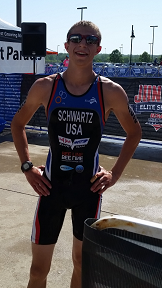
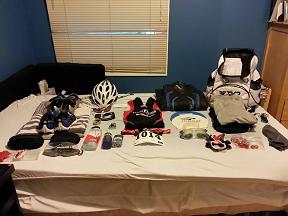
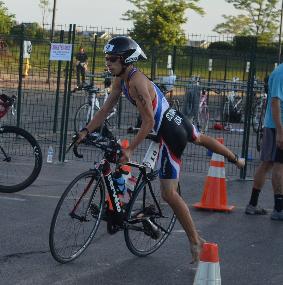
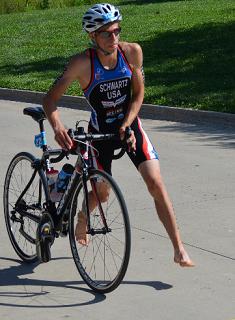
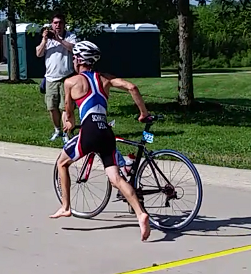



Leave a Reply